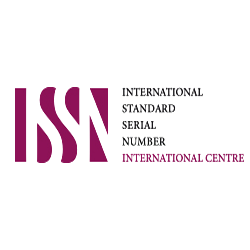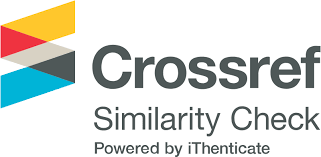
Articles submitted to Scientific Steps Group journals are subject to strict peer-reviewing. All our journals operate double blind peer-review (the reviewers do not know the authors’ identities until the paper has been published).
Once a manuscript is submitted, the submission is received by the in-house Managing Editor, who will subsequently coordinate the whole editorial process for the manuscript: peer-review, decision making, possible author revisions, manuscript acceptance, copyediting, English editing, proofreading and final publication. An in-house Assistant Editor will be assigned to the submitted article and will send review invitations.
Three reports per manuscript are collected. Reviewers must hold a Master degree at least, cannot have published with the authors in the past three years, and must have recent publications in the field of the submitted manuscript.
The Editor-in-Chief, Guest Editor, or a suitable Editorial Board member can make the final acceptance or rejection decision for a manuscript, usually after the author’s revisions. We typically allow no more than two rounds of major revisions.
After the acceptance of an article for publication, the in-house editorial staff organize the production of the paper, which entails copyediting, English editing and final production in preparation for publication on the journal website. All journals are structured in yearly volumes and either monthly or quarterly issues. Nevertheless, articles are published online immediately after their acceptance and production.

We are seeking professionals to join our Editorial Board. You will be entitled to the following benefits when working with us as an editorial member.
Benefits for Serving as Editorial Members:
1. Enhance academic influence and enrich your resume.
2. Receive a Certificate for acknowledging your contributions to the journal.
3. Get your name listed in the journal website.
4. Get access to the latest research in advance and new contacts in your research field.
5. Get to know other scholars in your field and broaden academic connectivity.
6. Enjoy special offers on Article Processing Charges.
Editorial Members’ Responsibilities:
1. Review submitted manuscripts.
2. Advise on journal policy and scope.
3. Identify topics for special issues, which you may guest edit.
4. Attract new authors and submissions.
5. Promote the journal to your colleagues and peers.
6. Assist the editor(s) in decision making over issues such as plagiarism claims and submissions.
1. Requirements for a potential editorial member
The applicant is requested to possess at least 2-year research or working experience in the related areas of the applied journal.
The applicant with professor title or above will be given priority.
The applicant should have no less than 4 publications in the same topic area of the applied journal.
The applicant with relevant working experience is preferred.
2. Requirements for a potential Editor-in-Chief
The applicant is requested to possess at least 4-year research or working experience in the related areas of the applied journal.
The applicant with professor title or above will be given priority.
The applicant should have no less than 6 publications in the same topic area of the applied journal.
The applicant with relevant working experience is preferred.

As an editor at Scientific Steps Group, your role is vital in maintaining the quality and integrity of the research published in our journals. Your expertise and dedication ensure that the published articles contribute to the advancement of knowledge in their respective fields. This section provides guidelines to help you navigate your responsibilities effectively.
1. Editorial Responsibilities:
2. Manuscript Evaluation:
3. Ethical Considerations:
4. Timely Communication:
5. Editorial Decision-making:
6. Editorial Independence and Integrity:
7. Corrections, Retractions, and Expressions of Concern:
8. Professional Development:
9. Collaborative Environment:
10. Feedback and Communication:

Scientific Steps Group invites eligible scholars and researchers to join the Editorial Board Panel of our journals.
If you have interests to be an editorial member for the journals, you could join via the following channel.
Step 1: If you didn’t register before, please create an account first : Register
Step 2: Upload your CV and complete the necessary information and submit.




An independent academic publisher with an editorial team including many of the top researchers in the world. SSG publishes research, review, and case report articles in double-blind, peer-reviewed, open access scientific and academic journals.
Copyright © 2025 Scientific Steps International Publishing Services LLC (Dubai – United Arab Emirates)